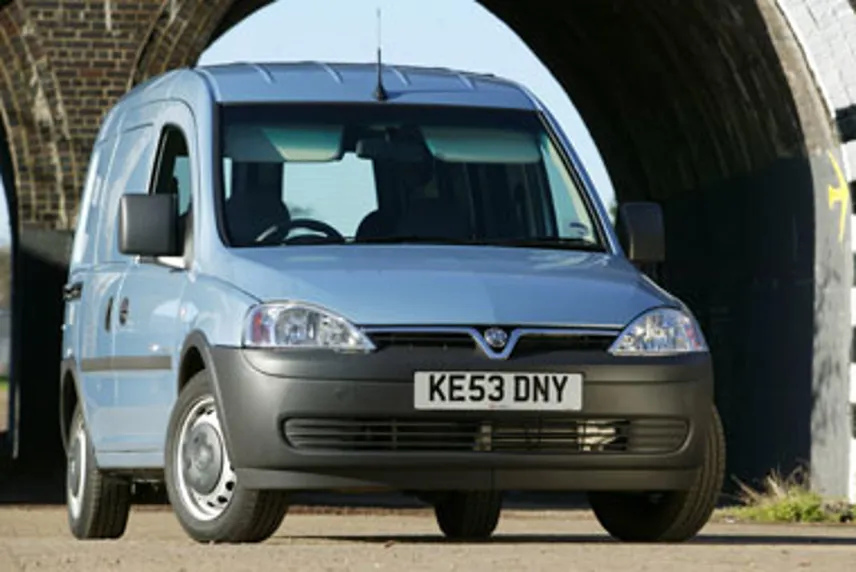Review
Standard spec includes driver and passenger airbag and ABS?brakes, while air conditioning adds £555 and electric windows are £75.
Our test van also had sat-nav and a CD autochanger at £850.
The driver’s seat has plenty of lumbar and side support but I felt that overly large drivers may have trouble fitting in. Being scrawny in the extreme, my frame fitted in nicely.
With the steering and seat adjusters added, there was no problem finding a comfortable position and there was plenty of legroom too.
Cubby holes are at a premium, as with most vans of this size, but the glovebox door includes a can holder and there is a large overhead storage space overhead, making the most of the available room.
In the back
I was expecting to find things cramped in the extreme in the rear, but was pleasantly surprised.
The side sliding doors are enormous and there is plenty of legroom for three rear passengers, along with headrests and three proper seat belts.
Meanwhile, there is a pull-back cover to hide valuable loads from prying eyes and the seats fold forward easily, as in your average hatchback car.
A rubber-matted floor comes as standard and there are load-lashing eyes in the rear to keep cargo in check, along with two little nets up higher for smaller items.
With the seats up, the load area measures 980mm in length.
With seats folded, load volume is around 3.0 cubic metres.
The rear doors can be ordered unglazed as a no-cost option. Payload is 810kg.
On the road
Vauxhall is the main manufacturer of LPG vans at present and this crew van can be supplied as a dual-fuel vehicle if necessary.
But fleets are more likely to opt for the diesel variants and here either a Di or DTi unit is available.
The first offers 65bhp at 4,400rpm and 95lb-ft of torque at 3,000rpm and the second 75bhp at 4,400rpm and 121lb-ft of torque at 1,800-3,000rpm.
Vauxhall does not offer a common rail diesel version and the result is that power is down on what the rivals can offer.
Citroen and Peugeot have 90bhp engines and the Fiat Doblo Cargo can give you 105bhp.
It was rather unfortunate that I had driven Fiat’s hot little Doblo the week before I drove this Combo, because in comparison, the Vauxhall felt dead slow.
But in the world of van fleets, many operators don’t want fast vans – think of the extra fuel and wear and tear for instance – and the Combo certainly never felt that it couldn’t cope with an 800kg load.
Starting up the powerplant on a cold morning reveals a bit of rattle and clatter but the engine soon calms down to a meaty thrum.
Power steering is electric and varies in strength depending on the speed of the vehicle.
I found it slight too damped for my liking but then I only tested this van empty. Under a full load, it might have been a different story.
Fuel economy is rated at 44 mpg for both turbo and non-turbo vans on the combined cycle.
Verdict
Vauxhall’s rise in sales last year was little short of phenomenal.
It was due in part to some extremely large fleet deals, but it was also down to a rock-solid line-up.
Nowadays, to be a success, every niche must be filled and at present, if you want a van like this with a good payload and seating for five, the Combo is the only one available.
I wonder how long it will be before the likes of Renault, Citroen and Peugeot respond with a model of their own?
















